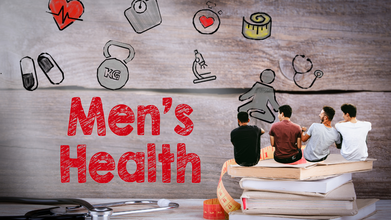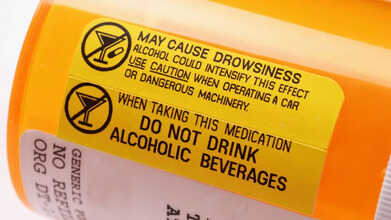- Health Conditions A-Z
- Health & Wellness
- Nutrition
- Fitness
- Health News
- Ayurveda
- Videos
- Medicine A-Z
- Parenting
Can Right To Die Be Practiced By Non-Terminally Ill Patients?

Credits: Canva
When Canada first passed its assisted dying legislation, also known as the Bill C-14 in 2016, it soon became a landmark in healthcare and personal autonomy. It is officially known as Medical Assistance in Dying (MAID) and was initially available only to those adults who were terminally ill. The eligibility criteria had strict parameters: the person had to be suffering from a "serious and incurable illness", be in an "advanced sate of irreversible decline", experience "intolerable suffering", and crucially their natural death had to be "reasonable foreseeable".
This legal threshold was also known as Track 1. This was modeled on end-of-life care and largely served people with terminal cancer or other severe illness who wanted control over their dying process. Track 1 is a relatively swift procedure, with some patients receiving MAID within a day of applying.
However, many Canadians live with severe, non-terminal conditions and they felt left out. These were people with degenerative diseases, chronic pain, or spinal injuries. They had and continued to suffer deeply, but were not imminently dying. They also began to request for MAID, however, were routinely denied.
ALSO READ: What Are The Dutch Guidelines Of Active Euthanasia And The Countries That Allow It
This led to a legal challenge by Jean Truchon, reports The New York Times. He is a man with spastic cerebral palsy whose suffering wasn’t deemed terminal. In 2019, a Quebec court ruled that the “reasonably foreseeable death” clause was unconstitutional. This case prompted the introduction of Bill C-7 in 2021, which created Track 2 — extending MAID eligibility to people with serious, incurable conditions causing enduring suffering, even if their deaths weren’t foreseeable.
Track 2 includes additional safeguards: a 90-day assessment period, evaluation by two independent clinicians, and consultation with specialists if necessary. Applicants must also be informed of other ways to alleviate their suffering and show they’ve seriously considered those options. While mental illness alone was technically included under Track 2, implementation has been delayed until 2027 due to concerns about inadequate mental health infrastructure.
Despite its tighter process and ethical complexities, Track 2 MAID has steadily gained use. In 2023, there were 622 deaths under Track 2 compared to 14,721 under Track 1. Still, Track 2 has ignited national debate, with critics claiming it opens the door to premature death among vulnerable populations — and supporters defending it as a compassionate choice for those trapped in non-terminal agony.
Also Read: First Sign Of Diabetes Might Show Up In Your Eyes—Here’s What To Look For
Paula Ritchie And The Doctor Who Stepped Forward To Assess Track 2 Patients
A 52-year-old woman from Smith Falls, Ontario had a far from simple case, assessed by Dr Matt Wonnacott, who agreed to assess Track 2 patients. He believed that these patients too had the right to autonomy and must be able to guide care decision, including the right to choose death when suffering becomes unbearable, reports The New York Times.
Paula had a long history of chronic pain and mental health challenges: fibromyalgia, chronic fatigue syndrome, migraines, depression, PTSD, borderline personality disorder, and more. But things got worse in early 2023 after a head injury. She began experiencing vertigo, migraines, uncontrollable muscle movements, and an overwhelming dizziness that made even basic tasks impossible.
Doctors failed to find a physical cause. Some attributed her symptoms to psychological distress, while others diagnosed post-concussion syndrome. Treatments ranged from Percocet and Ativan to acupuncture and reiki, but nothing worked. Paula’s life shrank to a single room, her body wracked with pain, her mind spinning. She tried to end her life — and failed.
YOU MAY WANT TO READ: Plea of Chilean Woman With Muscular Dystrophy Sparks National Debate on Euthanasia Bill
Frustrated by her inability to access help or relief, Paula began pursuing MAID. Her first request was denied. But she persisted, calling the regional MAID coordination center daily until she was finally reassessed by Wonnacott and a psychiatrist, Dr. Elspeth MacEwan.
During the assessment, Wonnacott asked if she would wait five years for a hypothetical cure. Paula said no — she could barely get through a day. She felt tortured. A veterinarian, she told a friend, would euthanize a dog in better shape.
Importantly, Wonnacott found her reasoning sound. She was not acting out of untreated mental illness or impulsivity. She had sought treatment. She had given it time. And she had thought carefully about her request. MacEwan agreed. Paula met the criteria under Track 2.
International Men's Day: Millions of Men May Be Living With Undetected Autoimmune Disorders, Know What They Are

Credits: Canva
On International Men's Day, we shift our focus on men's health and why is it important to talk about it. Time and again experts, doctors, and studies have shared how men generally visit GPs less than women. As per the NIH, US, the consultation rate is 32% lower in men than women. The difference is often attributed to a combination of women being more willing to admit sickness and seek help, while cultural factors and barriers for men keep them away from seeking help. However, not anymore, because both sexes require help when they need, especially when it is about their health.
Also Read: The Kessler Twins Die By Assisted Suicide in Germany; How It Differs From Euthanasia
As per a 2024 study published in the Journal of Clinical Investigation, about 5.7 million men could be living with an autoimmune disease that they do not even know about. The disease in men are often overlooked, all thanks to the social barriers.
Sex chromosomes play a key role in predisposing men or women to an autoimmune disease. Females have XX chromosomes, while male have XY chromosome and each chromosome carries gene sequence, which means specific pieces of DNA. Since X chromosome carries a bunch of gene related immunity,, having two of them could explain why women often have a higher rate of autoimmune diseases.
However, men are less likely to book time with their doctors, which could impact the discrepancies between sexes. They could thus often be undiagnosed or could flag their symptoms only when the disease has progressed.
Four Autoimmune Diseases Men Should Be Aware Of
Psoriasis
This is an inflammatory skin condition which affects both men and women. However, studies including the one published in 2023 in the International Journal of Women's Dermatology have suggested that men could develop this condition near their genitals and butt than women.
Also Read: Delhiites, Skip Your Morning Walk, You May Be Inhaling 3x Toxic Air Than Usual, According To Doctor
Ankylosing Spondylitis or AS
As happens due to the inflammation of the spine's joints and ligaments and could cause back pain and stiffness. While the condition is rare in itself, it could affect men more than women, that too at a younger age, usually below 40. A South Korean study from 2018, published in Scientific Reports, AS was 3.6 times more prevalent in men than women.
Type 1 Diabetes
The 2018 report by the Centers for Disease Control and Prevention, (CDC), US, provides data that type 1 diabetes may be slightly more in common in men than women. Though, other studies have been a mixed bag. Unlike type 2 diabetes, type 1 is an autoimmune disease, which means, here immune system attacks are specialized. What men should know is that both types of diabetes could up their risk of erectile dysfunction (ED) due to persistently high blood sugar, which could harm their nerves and blood vessels.
A 2016 study published in the International Journal of Impotence Research found that nearly 60% of 151 men being treated for type 1 diabetes had mild ED.
Inflammatory Bowel Disease (IBD)
The most common forms are Crohn's disease and ulcerative colitis, that take hold of digestive system. Chronic inflammation in the gut spikes the risk of colorectal cancer, which is one of the leading cause of death in men between 20 to 49 of ages. In fact, a 2023 study published in the journal Cancers noted that men with IBD faced a higher risk of developing colorectal cancer than women with IBD.
What Does A Black Box Warning On Your Prescription Drug Really Mean?

Credits: Canva
Not every medicine carries the same level of risk. Some drugs can trigger reactions that are severe or even life-threatening. When that possibility exists, the manufacturer is required to place a special notice inside the prescribing information. This highlighted section is known as a black box warning.
A black box warning is meant to draw clear attention to the most serious dangers linked to a drug. Many medicines fall under this category. Still, having the warning in place does not automatically make the treatment unsafe. When a drug is used correctly and monitored by a trained professional, the benefits may outweigh the risks.
The sections below outline what an FDA black box warning means, why a medicine might receive one, and how it may influence your treatment plan.
What Is An FDA Black Box Warning And What Does It Signify?
A black box warning is the strongest caution that the FDA can attach to a prescription drug. You might also see it described as a boxed warning.
The presence of this warning does not mean a person should never take the medication. Instead, it alerts doctors and patients to serious potential harm. This information helps clinicians decide who is an appropriate candidate and under what circumstances the drug should be used.
Many medicines with boxed warnings remain the best or only option for certain conditions.
How Serious Is A Black Box Warning?
A drug receives this type of label when it has been linked to outcomes such as permanent injury, hospitalisation, or death. These warnings should be read carefully, and patients should discuss them openly with their healthcare provider.
Doctors follow specific precautions when prescribing drugs that carry this label to minimize unnecessary risk.
Where Can I Find A Drug’s Black Box Warning?
The warning sits at the very top of the medication’s official package insert. Its placement is deliberate so it stands out immediately. The text is printed inside a bold black border, which is how the term “black box” took hold.
You may not always receive the full package insert from the pharmacy. However, you might receive a medication guide if the drug is considered high-risk. These guides describe proper use and highlight major side effects. You can also look up medication guides online.
Information about boxed warnings is available from multiple sources. The FDA website, the drug manufacturer’s website, and medical reference sites used by clinicians all include these details.
How Does A Drug End Up With A Black Box Warning?
Every prescription drug must go through extensive testing before it reaches the market. During this process, researchers aim to uncover risks that could require a boxed warning from the start. Even so, some side effects only appear once large numbers of people begin using the drug in everyday settings.
Because of this, most black box warnings are added after a medicine has already been approved. The FDA continues to monitor safety reports through MedWatch, a program where patients, physicians, and companies can report problems.
These reports are gathered in a database called the FDA Adverse Event Reporting System. When the agency notices a pattern of serious reactions, they investigate. If needed, they update the prescribing information and add a boxed warning so that future users are clearly informed.
Think Your Hormones Are Out Of Balance? Doctors Reveal The Warning Signs You Shouldn’t Ignore

Credits: Canva
People assigned female at birth live with hormone shifts throughout their lives. These chemical messengers guide nearly every system in the body. The swings linked to periods, pregnancy or menopause are easy to recognise, but many other factors can unsettle hormone levels.
The body produces more than fifty hormones through the endocrine system, and changes in any of them can signal a deeper health concern. Low insulin may point toward diabetes. Excess cortisol can influence weight gain. Other hormones, like melatonin, rise and fall through the day as part of normal rhythm. And the gradual drop in estrogen and progesterone as women approach menopause is also expected.
What Causes Hormonal Imbalance?
Puberty, pregnancy and menopause naturally reshape hormone activity. Beyond these, several conditions can disrupt normal patterns. Problems with the adrenal gland, thyroid disorders, eating disorders, congenital adrenal hyperplasia, Cushing’s syndrome, diabetes or PCOS can all change your hormone levels. Changes may also stem from stress, certain medicines, tumours, cysts or environmental chemicals.
Interest in hormones has grown recently. Earlier this month, the Food and Drug Administration agreed to remove the boxed warning on menopause hormone therapy after reviewing the evidence. The decision prompted fresh discussion among women considering treatment. Clinicians say many patients are reaching out with new questions, especially in an era filled with quick tests and supplements marketed as hormone balancers. It can be difficult to tell when testing is truly needed.
Warning Signs Of Hormonal Imbalance
As each hormone plays a different role, symptoms vary widely. These are some of the more frequent changes seen in people, as per UCLA Health.
1. Menstrual changes: Shifts in estrogen and related hormones can alter the monthly cycle. Periods may become heavier, lighter, irregular or go missing. Stress, diet and exercise can contribute as well, but hormonal swings remain a leading cause.
2. Hair changes: Hair often reacts quickly to hormonal shifts. Pregnancy can bring thicker strands, while imbalances may trigger hair thinning or hair growth in unexpected places. Excessive facial hair may suggest elevated androgens. Hair loss can point toward a thyroid concern.
3. Skin Changes: Hormonal shifts can influence skin colour, texture and oil production. Acne may flare during pregnancy due to rising progesterone. Darkened patches of skin may appear on areas like the neck, groin or beneath the breasts when estrogen or progesterone levels change.
4. Sexual and vaginal symptoms: Lower estrogen levels, especially with age, can reduce libido and cause vaginal dryness or pain during intercourse. Some women may experience vaginal atrophy when estrogen remains low for long periods.
5. Weight changes: Sudden weight gain or weight loss can reflect a hormonal issue. Many women notice weight gain after menopause. Thyroid disorders, PCOS and Cushing’s syndrome are also linked to changes in body weight.
6. Mood and sleep difficulties: Falling estrogen levels influence serotonin, a chemical important for stable mood. Low serotonin can contribute to anxiety, irritability or low mood. These disruptions often spill into sleep. Some women also report night sweats or trouble staying asleep.
7. Digestive issues: Estrogen and progesterone affect digestion. When these hormones shift, the gut may respond with bloating, constipation or diarrhoea. Some research has linked hormonal changes in people AFAB to irritable bowel syndrome. Many notice digestive changes around their menstrual cycle.
What To Do If You Suspect A Hormonal Imbalance
There is no single test that measures every hormone, and at-home kits only cover a few markers. The safest first step is to speak with your primary care doctor. They can look at your overall health and decide what evaluations are appropriate.
Diagnosis may include:
- A physical exam and review of your medical history
- Checking prescriptions or supplements that may influence hormones
- Blood, urine or saliva tests to measure specific hormone levels
- A pelvic exam to check for cysts or growths
- An ultrasound to look at the ovaries, uterus, thyroid or pituitary gland
© 2024 Bennett, Coleman & Company Limited

